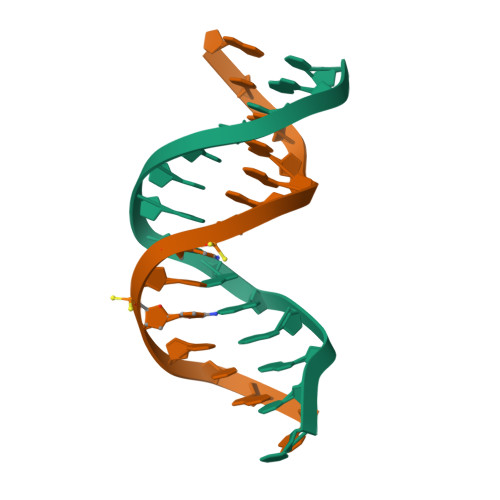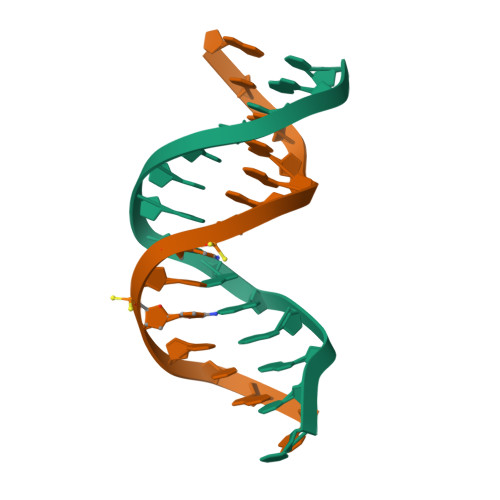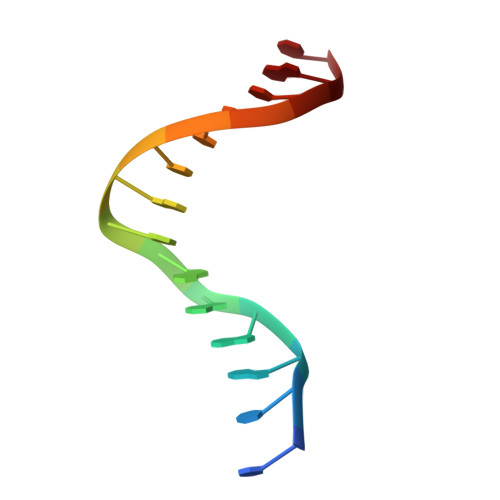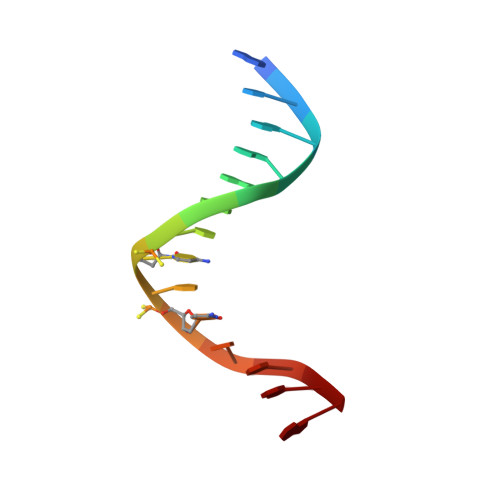Solution structure and design of dithiophosphate backbone aptamers targeting transcription factor NF-kappaB
Volk, D.E., Yang, X., Fennewald, S.M., King, D.J., Bassett, S.E., Venkitachalam, S., Herzog, N., Luxon, B.A., Gorenstein, D.G.(2002) Bioorg Chem 30: 396-419
- PubMed: 12642125
- DOI: https://doi.org/10.1016/s0045-2068(02)00510-2
- Primary Citation of Related Structures:
1K8J, 1K8L, 1K8N - PubMed Abstract:
A variety of monothio- and dithiosubstituted duplex aptamers targeting NF-kappaB have been synthesized and designed. The specificity and affinity of the dithioate aptamers of p50 and RelA(p65) NF-kappaB homodimers was determined by gel shift experiments. The NMR solution structures for several unmodified and dithioate backbone modified 14-base paired duplex aptamers have been determined by a hybrid, complete matrix (MORASS)/restrained molecular dynamics method. Structural perturbations of the dithioate substitutions support our hypothesis that the dithioate binds cations less tightly than phosphoryl groups. This increases the electrostatic repulsion across the B-form narrow minor groove and enlarges the minor groove, similar to that found in A-form duplexes. Structural analysis of modeled aptamer complexes with NF-kappaB homo- and heterodimers suggests that the dithioate backbone substitution can increase the aptamer's relative affinity to basic groups in proteins such as NF-kappaB by helping to "strip" the cations from the aptamer backbone.
Organizational Affiliation:
Department of Human Biological Chemistry and Genetics, The University of Texas Medical Branch at Galveston, 301 University Boulevard, Galveston, TX 77555-1157, USA.
















